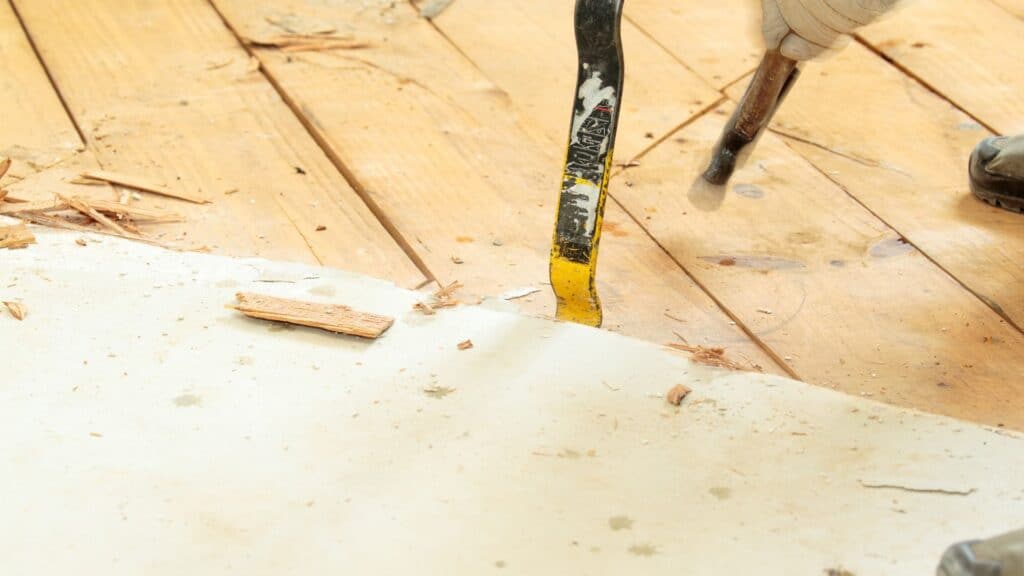Introduction
When planning a repair or renovation project, your ultimate success will depend on the small details. When fitting new flooring, it is critical to decide what, if anything, goes between the base floor and the surface material. To ensure a solid and durable finish, don’t neglect this choice or make a snap decision – it could result in costly alterations or a refit. Why is this so important for the finished project? And thus, what’s the difference between a gym underlay and a gym subfloor?
In this article, we will discuss that despite the difference in their respective roles, these two pieces of equipment are actually fairly similar; it is simply a case-by-case choice. Their main commonality is that they repair imperfections in the base floor before installing the surface flooring.
What are the functions of an underlay?
Often overlooked, an underlay brings enormous benefits to your finished flooring. Although it can seem an inconvenient additional cost, it is essential.
An underlay makes it possible to repair the details of a substrate defect, dispensing with the need for patching or filling in imperfections that appear on the surface. It also plays an important role in insulation. They provide good heat insulation, inhibiting heat loss and preventing cold energy transfer from the base floor. It additionally provides a layer of sound insulation, i.e. it limits the transmission of airborne noise (traffic, voices, loud music, television sound) or solid noise (shocks, impacts) from one room to another.
Combined with a moisture barrier, it provides a two-in-one function since it will also insulate the floor against rising damp. It is therefore not only an effective insulator but also protects against moisture and dampness.
Please note: some flooring comes with an underlay, therefore it’s always sensible to check with your supplier before ordering something you end up not needing.

Underlay for different types of flooring
PVC flooring: For a clip-in PVC floor, installing an underlay isn’t always necessary. However, an underlay shouldn’t be overlooked. It will balance out imperfections and ensure that the floorboards can be used without causing unwanted noise.
Glued PVC planks: Use a two-in-one underlay to avoid moisture damage.
For PVC rolls, self-compacting PVC tape, adhesive PVC tape, PVC garage tile and rigid PVC tape, an underlay shouldn’t be necessary unless otherwise advised due to base floor imperfections.
Carpet: Install a glued underlay before a carpet tile surface to reduce the imbalance of your substrate. It provides optimum insulation from noise, comfort and heat. Underlay isn’t necessary for broadloom carpets.
Wood: For floating parquet, an underlay is necessary, especially for engineered parquet. It will reduce the propagation of impact noise and footsteps. It also contributes to thermal and acoustic insulation. Together with a vapour barrier, it can protect your floor from rising damp.
Laminate flooring also requires an underlay to eliminate noise and moisture. For all types of glued parquet, an underlay isn’t always necessary.
Cork flooring requires the use of an underlay with an HDF board.
For other types of flooring like tiles or clip-on linoleum, an underlay isn’t necessary.
What are the functions of a subfloor?
Subfloors prevent problems with cold, twisting and moisture in the flooring. They aid in creating a flat surface, and help to soundproof and protect the flooring surface.
Subfloor for different types of flooring
Felt subfloor: Available in rolls or tiles, it is easy to lay and can offer sound insulation properties.
Rubber subfloor: Sound-absorbing and moisture-resistant, they are easy to install.
Foam subfloor: An environmentally friendly material, as it is recyclable. For optimal efficiency, combine it with rubber or a vapour barrier.
Cork subfloor: Ensures the solidity of the surface material by protecting it from impacts.
Vapour barrier subfloor: Used to protect hardwood from moisture.
Summary
An underlay and a subfloor are different: each has its role in solidifying the flooring surface. However, it depends on what you are working with. The underlying issues contained within the existing surface, and how you intend to use the space, will best determine which material you use.
These two products differ in their respective roles. On the one hand, the underlay contributes to the insulation of noise and sound. It also serves to prevent heat loss and cold penetration. On the other hand, the subfloor serves to solidify and protect the floor against instability and discomfort.
The appropriate choice depends on the type of base floor. Hard, cold base floors such as concrete ground floors can sustain damage with excess moisture exposure. In this case, for example, it’s necessary to use an underlay with a moisture barrier.
To comment on this article, please go to the LinkedIn post.
Disclaimer: The opinions and positions expressed in this publication are those of the authors and contributors and do not necessarily reflect the opinions or policies of the professional fitness community.


